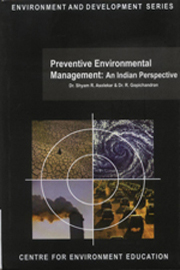Summary
Published online by Cambridge University Press: 05 November 2011
Summary
The link between business, production, commerce, and environmental imperatives seems to be increasingly obvious in recent times. The development of an unprecedented set of environmental laws all over the world substantiated this growing trend. What is even more interesting is the fact only a few crusaders managed to influence policy makers and opinion makers to devise the “command and control regime”.
However, it became increasingly clear during later part of 20th century that “C & C” model alone could not help attain an appropriate milieu for progress towards a desirable environment and ensure sustainable development. To bridge this gap, a proactive movement emerged in governing systems including industry and community, enabling a cleaner environment. This entailed a paradigm shift towards an approach, popularly known as PEM, i.e. Preventive Environmental Management. Implicit in this paradigm is the twining of economic and environmental benefits.
The need for incorporating PEM approaches, characterized by community action in all levels of implementation is highlighted. Process and product related parameters, impact assessment, and voluntary initiatives that go beyond laws and enforcement are features of emerging trends in comprehensive environmental management, that need to be integrated into the Indian context.
Diagnosing processes and systems for pollution hot-spots, evolving process related interventions to reduce wastes at source, improving product quality and yield, enhancing waste treatment and value addition, integrating economic and environmental concerns of the stakeholders and adopting a holistic approach constitute the basic elements of a firm-level PEM.
Information
- Type
- Chapter
- Information
- Preventative Environmental ManagementAn Indian Perspective, pp. 1 - 2Publisher: Foundation BooksPrint publication year: 2005
